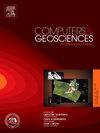基于递归神经网络和预测学习的三维地质模型自动重建
IF 4.4
2区 地球科学
Q1 COMPUTER SCIENCE, INTERDISCIPLINARY APPLICATIONS
引用次数: 0
摘要
沉积体的时空演化具有非平稳性,难以用传统的地质建模工具进行模拟。基于卷积长短期记忆(ConvLSTM)网络的深度学习算法可以缓解这些限制,因为沉积环境的时空动态可以被明确地建模,结构和属性信息可以逐层构建。然而,由于ConvLSTM的内存流限制和分层视觉表示,不能同时捕获低级和高级语义特征。因此,小尺度的地质特征往往被忽视。此外,在地质剖面编码和预测过程中,ConvLSTM的长期建模和预测能力不足。所有这些挑战都可能影响ConvLSTM在地理建模中的应用。为了克服这些限制,我们提出了一个地质建模递归神经网络(GM-RNN)框架。具体而言,我们使用时空记忆流的之字形过渡路径,允许不同循环层的空间动态相互作用。此外,引入了记忆解耦的时空LSTM (ST-LSTM)单元,提高了复杂时空变化的长期和短期建模能力。最后,采用反向调度采样(RSS)策略提高了GM-RNN的长期预测性能。利用两类训练图像来评估GM-RNN的仿真性能。数值实验表明,不同的模拟结果在空间变异性、通道连通性、相类型比例和空间分布格局等方面与相应的TI相匹配。此外,我们表明,具有不同尺度的二维地质剖面可以作为训练过的GM-RNN的输入,并且在不影响模型质量的情况下,在这些尺度上预测地质体。本文章由计算机程序翻译,如有差异,请以英文原文为准。
Automatic reconstruction of 3D geological models based on recurrent neural network and predictive learning
The spatiotemporal evolution of sedimentary bodies is difficult to model with traditional geological modeling tools due to its non-stationarity nature. Deep learning algorithms, based on Convolutional Long-Short Term Memory (ConvLSTM) networks, allow to alleviate these limitations as the spatial and temporal dynamics of the sedimentary environment can be explicitly modeled, with structural and attribute information being constructed layer-by-layer. However, due to memory flow limitations and hierarchical visual representations of ConvLSTM, both low-level and high-level semantic features cannot be simultaneously captured. Consequently, small-scale geological features are often overlooked. In addition, long-term modeling and predicting capabilities of ConvLSTM are insufficient during geological sections encoding and forecasting processes. All these challenges might impact the application of ConvLSTM for geo-modeling. To overcome these limitations, we propose herein a geological modeling Recurrent Neural Network (GM-RNN) framework. Specifically, we use zigzag transition path of spatiotemporal memory flow, which allow spatial dynamics at different recurrent layers to interact with each other. Besides, Spatiotemporal LSTM (ST-LSTM) units with memory decoupling are introduced, in which long-term and short-term modeling capabilities for complex spatiotemporal variations can be improved. Finally, Reverse Schedule Sampling (RSS) strategies are used to improve the long-term prediction performances of GM-RNN. Two kinds of Training Images (TIs) are used to assess the simulation performance of GM-RNN. Numerical experiments show that diverse simulations match the corresponding TI in terms of spatial variability, channel connectivity, facies type proportion and spatial distribution patterns. Additionally, we show that 2D geological sections with different scales can be the input of a trained GM-RNN and geobodies are predicted at these scales without compromising the quality of the models.
求助全文
通过发布文献求助,成功后即可免费获取论文全文。
去求助
来源期刊

Computers & Geosciences
地学-地球科学综合
CiteScore
9.30
自引率
6.80%
发文量
164
审稿时长
3.4 months
期刊介绍:
Computers & Geosciences publishes high impact, original research at the interface between Computer Sciences and Geosciences. Publications should apply modern computer science paradigms, whether computational or informatics-based, to address problems in the geosciences.
 求助内容:
求助内容: 应助结果提醒方式:
应助结果提醒方式:


